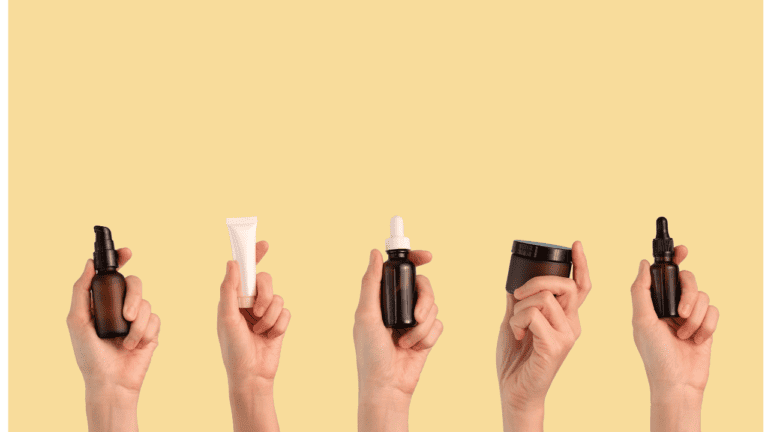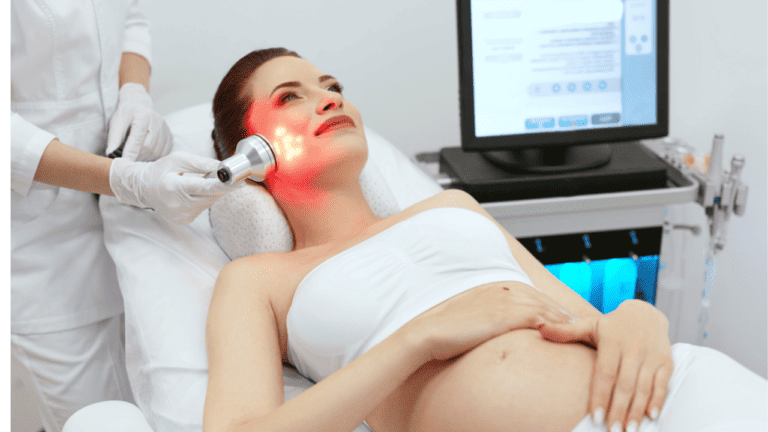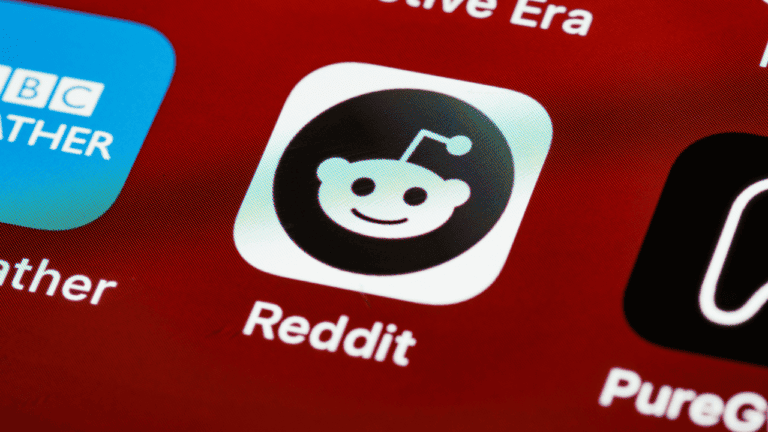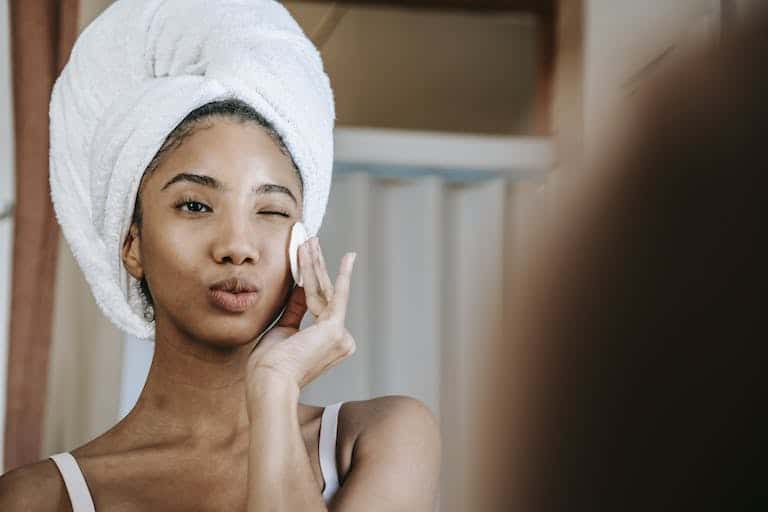Blind pimples can be quite a nuisance, as they form deep under the skin and are often painful and difficult to treat. These blemishes occur when oil and dead skin cells become trapped in a hair follicle, leading to an inflamed bump that doesn’t have a visible head. When faced with a blind pimple, you may be tempted to try various treatment methods to reduce its appearance and discomfort overnight.
One such method that has gained some attention is freezing blind pimples. The idea behind this approach is that applying cold to an inflamed area can potentially constrict blood flow, reduce swelling, and decrease inflammation. While this method might provide temporary relief, and is possible to reduce inflammation quite well, consider the implications and ensure that you’re using the tools that will treat your skin gently. Also, it’s important to consider other proven treatments and preventive measures to effectively deal with blind pimples in the long term.
Key Takeaways
- Freezing a blind pimple may temporarily reduce inflammation and discomfort
- Initial care and treatment involve warm compresses, acne-fighting creams, and avoiding squeezing
- Preventing blind pimples involves maintaining proper skin hygiene and seeking a dermatologist’s advice for a tailored treatment plan
Do Pimples On Ice Help?

Cryotherapy and pimples
This is essentially Cryotherapy, you could use a cold compress as a home remedy for treating various types of inflammatory acne. The cold application helps to constrict blood vessels, which may reduce redness, swelling, and pain in inflammatory-type pimples such as pustules and cysts. However, keep in mind that cryotherapy might not be as effective for non-inflammatory acne.
applying a cold compress to an acne cyst aka Blind Pimple
When treating a blind pimple, also known as an acne cyst, applying an ice pack can be beneficial in reducing inflammation. To do this:
- Wrap the ice: Make sure to wrap the ice or ice pack in a thin cloth or towel, as direct contact with ice can cause frostbite.
- Apply the ice: Gently press the wrapped ice against the cyst for about 10-15 minutes, repeating this process a few times a day.
One thing to note is that you never want to apply the ice directly against the skin unsupervised as this can quickly lead to what’s known as an ice burn, your skin tissue might be damaged and it could even scar leading to a result that you were trying to avoid in the first place.
Remember that it’s essential to avoid squeezing or picking at your pimple, as it can worsen the inflammation and potentially lead to scarring. As always, it’s essential to maintain a proper skincare routine, which includes regular cleansing, exfoliation, and moisturizing, to prevent future breakouts and maintain your skin’s overall health.
This post may contain affiliate links, which means I’ll receive a commission if you purchase through my link, at no extra cost to you. Please read full disclosure here.
At Home Cryo Tools To Use
There are plenty of ways to cool down your skin, but one of the most convenient is to have a Cryo tool ready to go whenever you need it. It also means no direct ice on your skin, and no melting of ice dripping down your arm the entire time. Let’s start with Cryo Sticks.
Fabludo 2-in-1 Gua Sha Cryo Sticks

The Fabludo 2-in-1 Gua Sha Cryo Sticks offer an efficient and enjoyable at-home cryo treatment for a lifted, sculpted, and de-puffed face. Cryo Sticks let you use both hands so it provides a cooling experience faster. You might be able to get away with using metal spoons in the fridge as well but the shape of the Cryo Sticks really make a huge difference. The Fabludo has a Unique mermaid tail shape and it uses medical grade stainless steel for optimal thermal energy retention.
Kitsch Stainless Steel Ice Roller for Face

Another popular cryo tool is the ice roller. To use an ice roller, simply place the roller head in your freezer and allow it to chill for a few hours. Once it’s cold, gently roll it over the affected area for a few minutes.
Regardless of the method you choose, always remember:
- Be gentle with your skin
- Apply the cold treatment for short periods
- Avoid direct contact with ice to prevent skin damage
- Use a clean cloth or tool to ensure proper hygiene
Investing in an at-home cryo tool can be a helpful addition to your skincare routine, especially if you frequently experience blind pimples. Just remember to use these tools correctly and keep your skin’s health in mind.
What Other methods work best for reducing a blind pimple overnight?
While blind pimples can be annoying and difficult to deal with, there are a few methods you can try in order to reduce them overnight. Keep in mind that the results may vary depending on your skin type and the severity of the pimple.
- Warm compress: Applying a warm compress to the affected area can help to soften the skin and bring the pimple to the surface, making it easier to extract and heal. This typically works for not inflamed pimples as well. Simply soak a clean cloth in warm water, wring it out, and hold it against the pimple for about 10-15 minutes. Repeat this process as needed throughout the day.
- Cold compress: A cold compress can be useful for reducing the swelling and inflammation associated with a blind pimple. Just like the warm compress, you’ll want to soak a clean cloth in cold water, wring it out, and apply it to the pimple for the same duration to soothe the area.
- Tea tree oil: This essential oil has been shown to have antibacterial properties that might help with reducing inflammation and infection in blind pimples. You can apply tea tree oil to a cotton swab and then dab it directly onto the pimple, being cautious not to apply too much as it can be irritating to the skin.
- Over-the-counter treatments: There are several OTC remedies available that can help address blind pimples. Look for products containing salicylic acid, benzoyl peroxide, or alpha-hydroxy acids, which can help to unclog pores and reduce inflammation.
- Pimple patches: Hydrocolloid pimple patches can also be an effective method for treating blind pimples. These patches are designed to draw out fluids and bacteria from the pimple, helping it to heal faster. However, look specifically for ones that have either ‘microneedles’ or ‘micro darts’ which can help deliver ingredients deeper into the skin before the pimple erupts.
Remember to always keep your skin clean and avoid picking at or popping the pimple, as this can worsen the situation and potentially cause scarring. It’s also important to note that these methods may not work for everyone, and if your blind pimple persists or worsens, it’s worth consulting a dermatologist for professional advice.
Understanding Blind Pimples

Causes of Blind Pimples
Blind pimples are a type of acne that form under the skin and are not visible on the surface. They can be painful and cause inflammation and swelling in the affected area. The primary causes of blind pimples include:
- Excess oil production: When your skin produces too much sebum, it can clog your pores. This extra oil may then mix with dead skin cells, resulting in the formation of a blind pimple.
- Bacteria: The presence of acne-causing bacteria, such as Propionibacterium acnes, can aggravate the inflammation and lead to the appearance of a blind pimple.
- Dead skin cells: When dead skin cells accumulate on the skin’s surface or within the pores, they can mix with sebum, thus causing the development of a blind pimple.
To help prevent blind pimples, it is essential to maintain a consistent skincare routine, including regular cleansing, exfoliation, and moisturizing.
Comparing Blind Pimples to Other Acne
Blind pimples differ from other types of acne in several ways:
- Visibility: Unlike whiteheads and blackheads, blind pimples do not have a visible head on the skin’s surface. They are found underneath the skin and may be harder to detect.
- Pain: Blind pimples are often more painful than other acne types, as they cause inflammation and swelling in the deeper layers of the skin.
- Treatment: The treatment for blind pimples may be different from other acne types. For instance, while you can usually treat whiteheads and blackheads with over-the-counter acne products, blind pimples often require more targeted treatments, such as warm compresses, in addition to professional medical advice.
Understanding the differences between blind pimples and other forms of acne is crucial for determining the most appropriate treatment methods. If you’re unsure about the type of acne you have or are dealing with persistent or painful blind pimples, it is best to consult a dermatologist to find the right solution for your skin.
Initial Care and Treatment
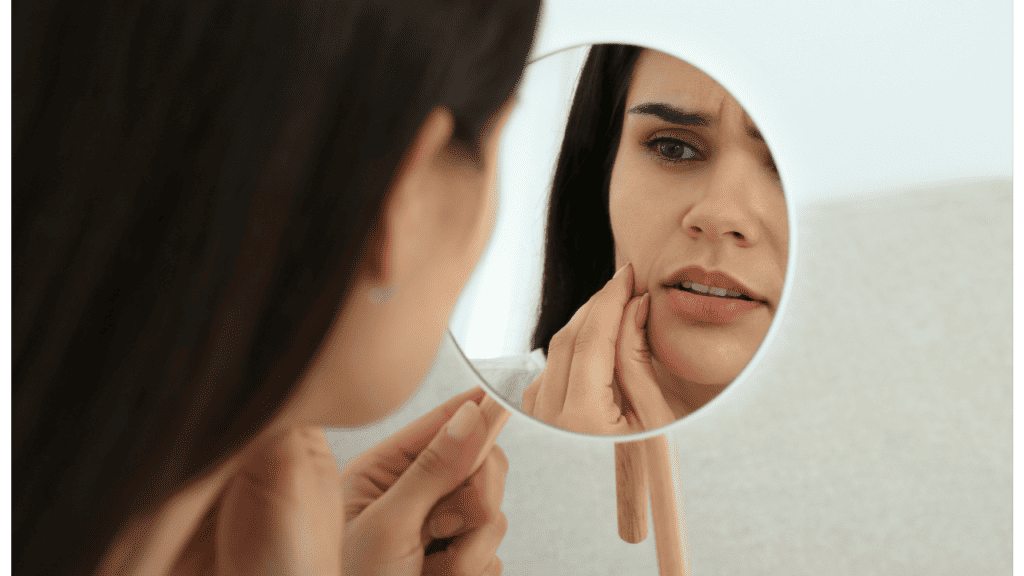
Do’s and Don’ts
When dealing with a blind pimple, it’s essential to take proper care to avoid worsening the condition or causing scars. Here are a few do’s and don’ts to keep in mind:
- Doapply an ice pack on the pimple for about 10 minutes to reduce inflammation and ease pain. Make sure to wrap the ice in a cloth first, never apply ice directly to your skin.
- Do avoid picking, squeezing or popping the pimple, as this can further irritate the area and lead to infections or scarring.
- Don’t use harsh, drying, or abrasive cleansers. Instead, choose a gentle cleanser to clean the affected area without causing irritation.
- Don’t apply too many over-the-counter remedies. Stick to one or two treatments to avoid overloading the skin.
Home Remedies and Immediate Care
Several home remedies can help to alleviate pain and speed up the healing process for a blind pimple. Remember to be cautious and ensure your skin’s tolerance before trying these treatments.
- Ice Pack: As mentioned earlier, ice can help to reduce inflammation and pain. Apply an ice pack on the affected area for about 10 minutes.
- Warm Compress: Applying a warm compress can help to bring the pimple to the surface and promote drainage. Use a clean cloth soaked in warm water, and hold it against the pimple for 10-15 minutes.
- Tea Tree Oil: Tea tree oil is known for its antibacterial and anti-inflammatory properties. Dilute few drops of tea tree oil in a carrier oil (like coconut or almond oil), and gently dab it on the pimple using a cotton swab.
- Over-the-counter remedies: Products containing benzoyl peroxide or salicylic acid can help to dry out the pimple and speed up the healing process. Make sure to follow the instructions on the label and avoid excessive use.
Incorporating these care and treatment tips should help you manage blind pimples effectively. Remain patient, as blind pimples may take some time to heal. If the pimple worsens or doesn’t improve with time, consider consulting a dermatologist for professional advice and treatment.
Prevention Strategies

Daily Skincare Routine
To prevent blind pimples, it is essential to establish a consistent daily skincare routine. Start by cleansing your face twice a day using a gentle, non-comedogenic cleanser to remove dirt, oil, and makeup. Make sure to select skin care products that are suitable for your skin type, as using inappropriate products can contribute to oily skin and pimples. After cleansing, use a lightweight, oil-free moisturizer that won’t clog your pores.
Exfoliate your skin once or twice a week to remove dead skin cells and unclog pores. Pay attention to areas that are prone to blind pimples, such as the forehead, nose, and chin, as these regions often experience more oil production. Remember to always apply sunscreen when spending time outdoors, and consider using makeup products that are non-comedogenic.
Lifestyle and Diet
Your lifestyle and dietary habits can also affect your skin’s health. To prevent blind pimples, try to manage your stress, as high stress levels can lead to hormonal fluctuations that can trigger pimples. Incorporate stress-relief activities into your daily routine, such as yoga, meditation, or exercise.
Keep in mind that sweat can exacerbate skin problems. Make it a habit to wash your face after exercising or any activity that causes excessive sweating, and avoid touching your face with dirty hands.
In terms of your diet, aim to consume a well-balanced diet rich in fruits, vegetables, and whole grains. Limit your intake of sugary, greasy, and processed foods, as these can contribute to inflammation and acne breakouts. Stay well hydrated by drinking plenty of water throughout the day, as this can help maintain healthy skin.
By following these prevention strategies, you can reduce the occurrence of blind pimples and enjoy clearer, healthier skin.
Potential Complications
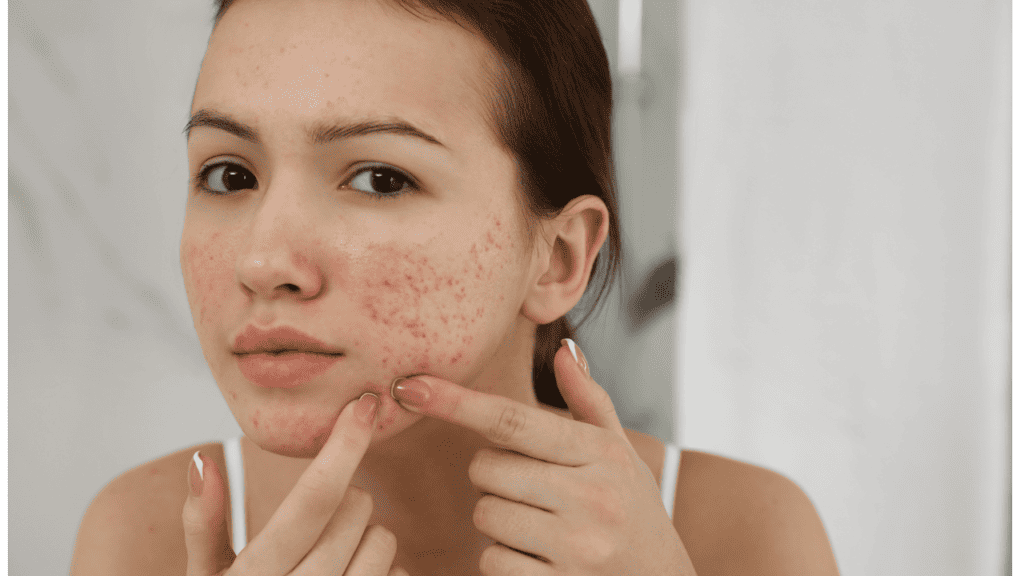
Risks of Squeezing and Picking
Squeezing and picking at a blind pimple may seem like an easy way to get rid of it, but doing so can actually cause further complications. When you squeeze a blind pimple, you run the risk of introducing bacteria into the area, which can potentially cause an infection1. In addition, forcing a pimple to rupture beneath the skin’s surface can lead to the formation of a cyst or nodule2, making the situation even more painful and difficult to manage.
Here are some risks associated with squeezing and picking at a blind pimple:
- Increased likelihood of infection
- Potential development of MRSA (a type of antibiotic-resistant staph infection)3
- Damage to the skin, leading to the formation of cystic acne or nodules
- Increased risk of scarring4
Long-Term Impacts
The short-term complications associated with squeezing and picking at a blind pimple are concerning enough, but the long-term impacts can be equally as detrimental. One of the most common long-term consequences of attempting to remove a blind pimple forcefully is scarring5. Scarring can occur, either in the form of raised or depressed scars, and may be challenging to treat over time.
In addition, the risk of developing cystic acne increases as a result of picking and squeezing at a blind pimple. Cystic acne is a more severe form of acne, characterized by the presence of deep, painful cysts or nodules. As a result, you could end up dealing with a much more severe and persistent complexion issue than the original problem6.
The table below highlights some of the long-term impacts of squeezing and picking at a blind pimple:
| Issue | Description |
|---|---|
| Scarring | Raised or depressed scars that can be challenging to treat |
| Cystic Acne | A more severe form of acne characterized by deep, painful cysts or nodules |
In summary, it’s best to resist the temptation of squeezing and picking at a blind pimple. You should focus on gentle treatment methods to avoid potential complications and long-term impacts.
Frequently Asked Questions
Is it safe and effective to pop a blind pimple using a pin?
It is not safe to pop a blind pimple using a pin, as it can lead to infection or scarring. Instead, try applying a warm compress to the area which can help to reduce inflammation and promote healing. If the pimple persists, it is best to consult with a dermatologist for professional advice and treatment options.
Does using ice on the skin help to diminish pimple marks?
Applying ice on the skin can help to reduce inflammation and redness associated with pimples and acne marks. This can temporarily minimize the appearance of the marks, but it is not a long-term solution. For lasting improvement, consider using topical treatments such as retinoids or seek advice from a dermatologist for personalized recommendations.
How can ice influence the appearance and redness of a blind pimple?
Ice can help to constrict the blood vessels surrounding a blind pimple, thus reducing redness and inflammation. To do this, wrap an ice cube in a clean cloth and gently press it against the pimple for a few minutes. Be sure not to apply the ice directly to your skin, as this can lead to frostbite or irritation.
What are the outcomes of treating acne with ice as reviewed by users?
Users who have tried treating acne with ice report mixed results. Some people find that it minimizes redness and inflammation, providing temporary relief from the symptoms of acne. However, ice is not a cure-all and is not a substitute for proper skincare and acne treatments. For a more lasting solution, it’s essential to follow a consistent skincare routine and consult with a dermatologist if needed.


